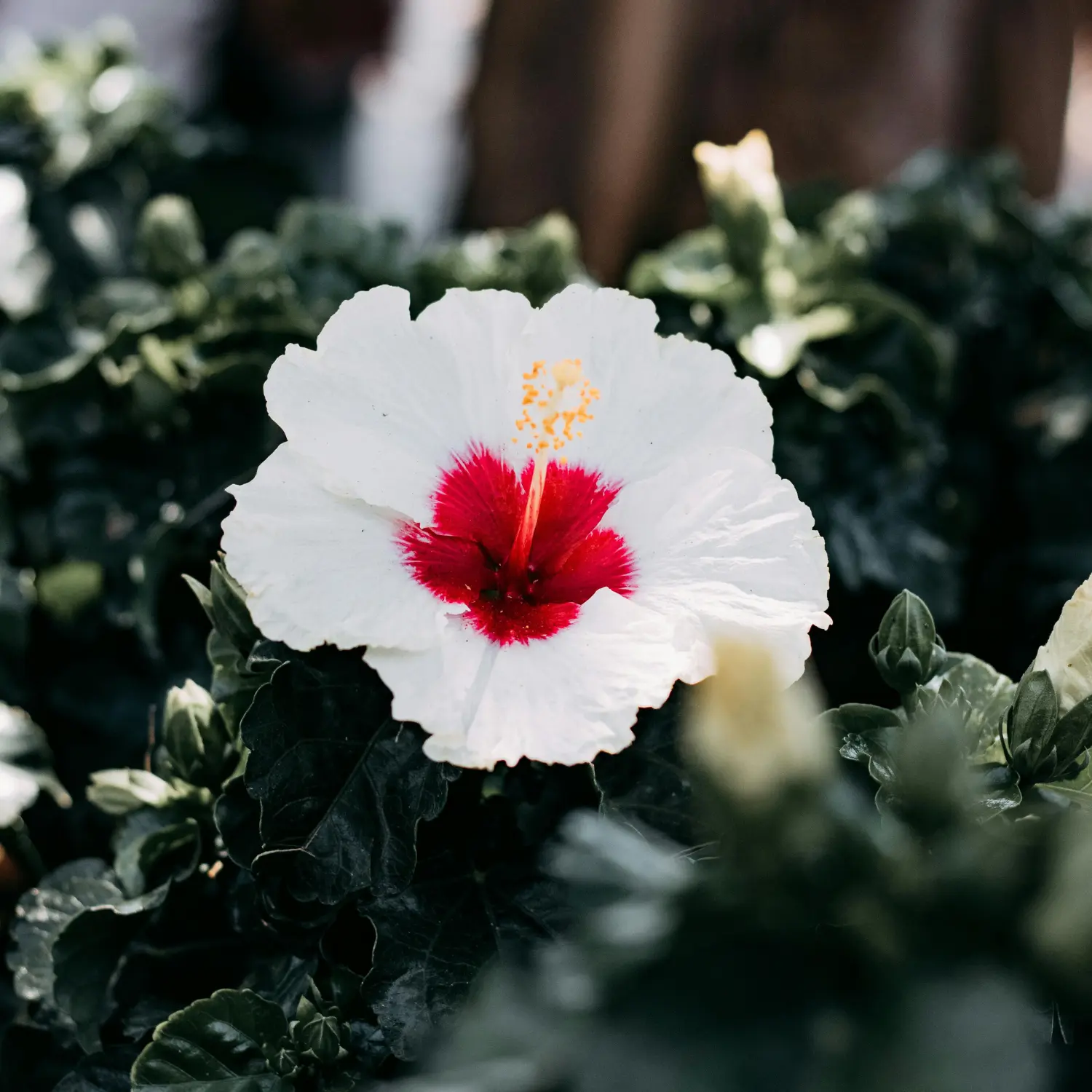This month, we’re shining the spotlight on the Hibiscus/Gudhal—a plant that knows how to make a statement with its bright, bold blooms.
Origin: A Tropical Traveler

Hibiscus plants (commonly known as Gudhal in India) originated in warm, tropical regions of Asia and the Pacific Islands. Over time, these plants spread to other parts of the world, gaining popularity in gardens everywhere. Thriving in hot, humid climates, hibiscus plants love the sun and are often found in tropical and subtropical regions.
Although hibiscus may seem like an exotic visitor in Indian gardens, it has become deeply integrated into the culture. India, in particular, has embraced the native variant, Hibiscus rosa-sinensis, which now feels like it’s always been here.
How Hibiscus/Gudhal Came to India: A Blend of Trade and Tradition
Ancient trade routes connecting the Indian subcontinent with Southeast Asia, China, and the Pacific Islands introduced hibiscus plants, especially Hibiscus rosa-sinensis, to India. Traders and travelers brought these vibrant plants, which quickly became integral to Indian culture, especially in Ayurveda, where people embraced their medicinal properties. Over centuries, Hibiscus rosa-sinensis flourished in Indian gardens, symbolizing beauty and devotion and serving as a reminder of the rich history of trade and cultural exchange that shaped India’s botanical heritage.
Benefits: More Than Just a Pretty Face
The hibiscus isn’t just a vibrant addition to your garden; it’s also deeply woven into Indian culture and Ayurveda, bringing a wealth of benefits beyond its stunning appearance.
Health Booster: Ayurvedic Elixir
In Ayurveda, hibiscus, known as “Japa,” is revered for its numerous health benefits. Hibiscus tea, made from its petals, remains a popular traditional remedy. This tea helps lower blood pressure, aids digestion, and supports liver health. Rich in antioxidants like Vitamin C, hibiscus tea is also believed to boost the immune system and combat inflammation. Ayurvedic practitioners often recommend hibiscus for its cooling properties, making it especially beneficial in balancing Pitta dosha.

Hair Care Hero: The Secret to Lustrous Locks
In Indian households, hibiscus is a go-to remedy for hair care. Families use the flowers and leaves to make hair oils, shampoos, and conditioners that promote hair growth, reduce dandruff, and prevent premature graying. When applied to the scalp, hibiscus-infused oil nourishes the roots, strengthens hair follicles, and enhances the hair’s natural shine. This trusted remedy, passed down through generations, maintains thick, lustrous hair.
Eco-Friendly: A Haven for Pollinators
Hibiscus plants benefit both people and the environment. In gardens, hibiscus attracts pollinators like bees and butterflies, which are crucial for the ecosystem. By growing hibiscus, you add beauty to your space while supporting biodiversity, making your garden a vibrant and eco-friendly sanctuary.
Significance: A Symbol of Beauty, Devotion, and Power

In Indian culture, the Hibiscus/Gudhal flower symbolizes much more than beauty; it carries deep meaning. The red hibiscus is often associated with the goddess Kali and Lord Ganesha, symbolizing divine power and the destruction of evil. Offering hibiscus flowers during worship brings prosperity and wards off negative energies.
Hibiscus also symbolizes love and devotion. It is often used in garlands and temple offerings, representing pure love and respect. The flower’s vibrant colors and strong presence in rituals highlight its significance as a symbol of strength, beauty, and unwavering devotion.
Care Tips: Keep Your Hibiscus/Gudhal Happy
Hibiscus plants are relatively easy to care for, but they do have a few specific needs:
- Sunlight: Hibiscus plants thrive in sunlight. Ensure they receive at least 6 hours of direct sun each day.
- Watering: Keep the soil moist but not waterlogged. Water regularly, especially during hot weather, but avoid overwatering.
- Fertilizing: During the growing season, feed your hibiscus with a balanced fertilizer to encourage continuous blooms.
- Pruning: Regular pruning helps your hibiscus maintain its shape and encourages more flowers. Don’t hesitate to give it a trim now and then.
- Winter Care: In cooler climates, bring your hibiscus indoors during winter or protect it with mulch.
Add a Splash of Color to Your Garden
Hibiscus brings a touch of the tropics to any garden. With its vibrant colors, health benefits, and cultural significance, this flower is sure to impress. Why not order one from Bhumij Plants and add a Hibiscus/Gudhal to your collection? It’s like having a little piece of paradise right at home!
Choose from our wide range of Hibiscus/Gudhal Plants-

